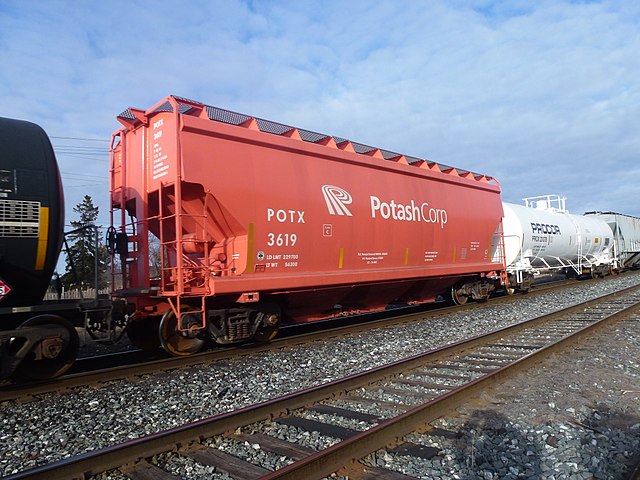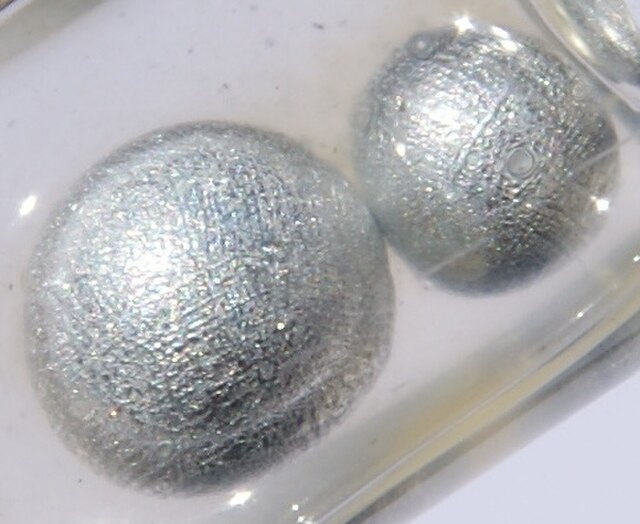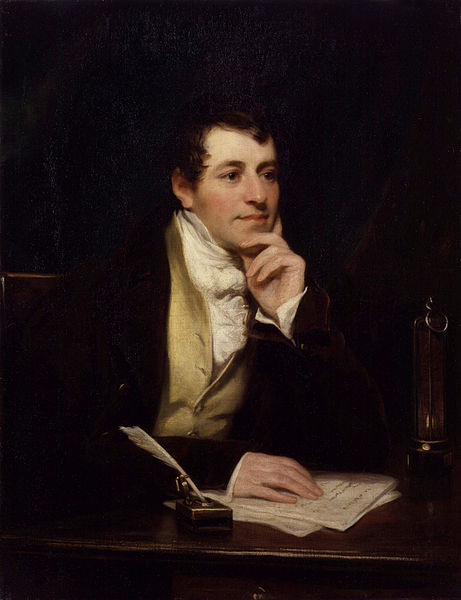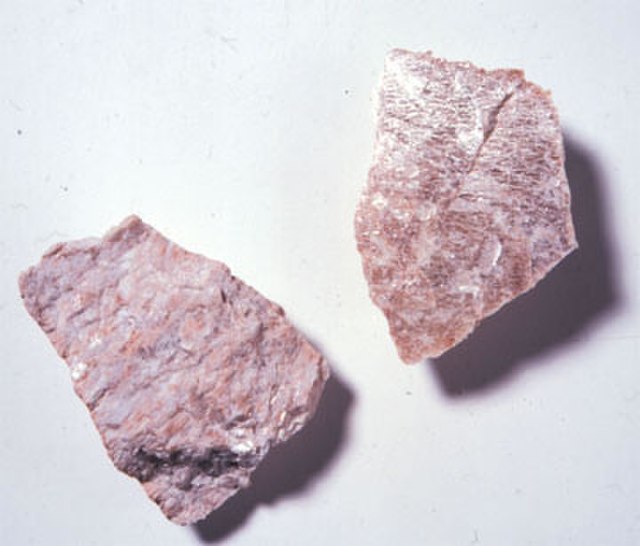Potash includes various mined and manufactured salts that contain potassium in water-soluble form. The name derives from pot ash, plant ashes or wood ash soaked in water in a pot, the primary means of manufacturing potash before the Industrial Era. The word potassium is derived from potash.
Polycrystalline potash, with a U.S. penny for reference. (The coin is 19 mm (0.75 in) in diameter and copper in color.)
The first U.S. patent was issued for an improvement "in the making of Pot ash and Pearl ash by a new Apparatus and Process"; it was signed by then President George Washington.
A covered hopper car in a Canadian train for shipping potash by rail.
Global imports/exports of potash in 1937
Potassium is a chemical element; it has symbol K and atomic number 19. It is a silvery white metal that is soft enough to easily cut with a knife. Potassium metal reacts rapidly with atmospheric oxygen to form flaky white potassium peroxide in only seconds of exposure. It was first isolated from potash, the ashes of plants, from which its name derives. In the periodic table, potassium is one of the alkali metals, all of which have a single valence electron in the outer electron shell, which is easily removed to create an ion with a positive charge. In nature, potassium occurs only in ionic salts. Elemental potassium reacts vigorously with water, generating sufficient heat to ignite hydrogen emitted in the reaction, and burning with a lilac-colored flame. It is found dissolved in seawater, and occurs in many minerals such as orthoclase, a common constituent of granites and other igneous rocks.
Potassium pearls (in paraffin oil, ~5 mm each)
Sir Humphry Davy
Pieces of potassium metal
Potassium in feldspar








